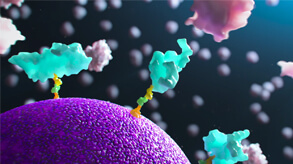Utility of proteomic trajectories of cardiovascular risk and cardiorespiratory fitness to monitor adverse health states throughout post-COVID-19 illness
Background
- Cardiovascular involvement is a prominent observation in patients during the acute phase of COVID-19 infection, as well as in convalescence. However, the etiology, trajectory, and underlying biology of cardiac dysfunction across the spectrum of COVID-19 illness is not fully understood.
- To address this, the CISCO-19 study (NCT04403607) was formed to investigate the multisystem effects of COVID-19 from hospitalized patients using blood-based biomarkers, imaging, and patient-reported outcome measures1.
- The CISCO-19 study identified a significant proportion of COVID-19 patients showed evidence for myocarditis in the short term (3 months) after COVID-19 hospitalization, and that this associates with persisting impairments in health status over longer-term follow-up2.
- These results indicate the potential ongoing substantial demands on healthcare services following COVID-19 illness, and highlight the need for high-throughput tools for evaluation and monitoring cardiac involvement across the course of illness and recovery.
- The Cardiovascular Risk Secondary SomaSignal™ Test (CV Risk SST) is a proteomic machine-learning model comprised of 27 proteins encompassing 10 biological systems that predicts the risk of myocardial infarction, heart failure, stroke or all-cause death within four years from a plasma sample; the Cardiorespiratory Fitness SST is comprised of 52 proteins and predicts VO2 max measurements without the need for exercise stress-testing.
Objectives
- Evaluate the ability of proteomic surrogates for CV Risk and Cardiorespiratory Fitness to monitor changes from acute COVID-19 illness into convalescence.
- Determine the differences in predicted CV Risk and Cardiometabolic Fitness scores between myocarditis likelihood groups post-COVID-19, and between those that are rehospitalized.
- Assess and compare the performance of the proteomic CV Risk SST to classify myocarditis likelihood to individual traditional circulating cardiac biomarkers.
Methods
- Paired EDTA plasma samples from the CISCO-19 trial collected from 154 patients hospitalized with COVID-19 at hospital discharge (Discharge) and again at 28-60 days post-discharge (Follow-up) were assayed using modified–aptamer proteomics technology, SomaScan Assay v4.1
- CV Risk and Cardiorespiratory Fitness SST scores were generated based on assayed proteomic measurements for each sample and compared between myocarditis likelihood groups which were adjudicated by consensus, as well as health record follow-up for rehospitalization.
- Circulating levels of high sensitivity cardiac troponin I (TnI) and NT-proBNP were measured in plasma using i1000SR ARCHITECHT (Abbott Diagnostics).
- Change in CV Risk scores and cardiorespiratory fitness between discharge and follow-up samples were assessed using paired t-tests.
- A linear-mixed model was designed using timepoint and myocarditis status (“very likely myocarditis” vs. others) or rehospitalization as fixed effects, and individual subject random effects. Effects were evaluated for significance using ANOVA.
- Classification performance of CV Risk was assessed by calculating area under the curve (AUC), and compared to TnI and NT-proBNP for 149 subjects that had all measurements available.
Results
- Myocarditis likelihood status and time after discharge were significant effects (ANOVA p<0.05) associated with predicted CV risk and cardiorespiratory fitness in COVID-19 recovery.
- Rehospitalization was also a significant effect associated with CV risk, but not cardiorespiratory fitness.
Conclusions
- Together our findings demonstrate the ability of proteomic CV risk and cardiorespiratory fitness surrogates to do the following:
- Monitor risk trajectories following COVID-19 infection
- Detect elevated risk of rehospitalization and consensus-based adjudicated myocarditis
- Classify patients’ myocarditis likelihood with superior performance to that of traditional CV biomarkers.
- These findings suggest that cardiovascular-related proteomic SST models may have utility through use of clinicians to guide risk stratification of COVID-19 patients for precision-based medical management, monitoring and rehabilitation throughout illness and convalescence.
Authors
Clare Paterson1
Michael A. Hinterberg1
Andrew J. Morrow2,3
Robert Sykes2,3
Kenneth Mangion2,3
Paul Welsh2
Alex McConnachie2,4
Naveed Sattar2
Colin Berry2,3,5
Stephen A. Williams1
1SomaLogic Operating Co., Inc, Boulder CO, USA
2British Heart Foundation Glasgow Cardiovascular Research Centre, University of Glasgow, Glasgow, UK
3Department of Cardiology, Queen Elizabeth University Hospital, Glasgow, UK
4Robertson Centre for Biostatistics, Institute of Health and Wellbeing, University of Glasgow, Glasgow, UK
5West of Scotland Heart and Lung Centre, NHS Golden Jubilee, Clydebank, UK
References
- Mangion et al. Cardiovasc. Res. 116, 2185–2196 (2020)
- Morrow, et al. Nature Medicine (2022): 1-11.
- Williams et al. Science Translational Medicine 14.639 (2022): eabj9625.
- Paterson et al. medRxiv 2021.01.28.21250129
Learn more by downloading this poster
More posters
PosterQuantitative immunology protein panel built on the SomaScan Assay platform
The SomaScan® assay is a highly multiplexed proteomic assay that uses SOMAmer® reagents to detect proteins in various biological samples. The latest version of the SomaScan assay allows researchers to measure over 11,000 proteins in human blood. The SomaScan assay is designed to provide protein epitope abundance measurements by reporting relative SOMAmer reagent abundance quantified using DNA microarrays.
PosterComparison of Proteomic CV Risk to Established ASCVD 10-Year Risk Decision Points
The ASCVD pooled cohort equation (PCE) is well-established for CV risk assessment. Decision points for determining treatment plans are low, intermediate and high risk over 10 years, however this approach over and underestimates risk in certain subgroups. The validated CV Risk SomaSignal® Test (SST) provides 4-year risk probability of MACE allowing for timely assessment of risk, but the shorter timescale makes comparison to 10-year PCE risk less intuitive.
PosterStatin signature: using proteomics to detect pharmacological fingerprints
Using a previously described metacohort (n=5,575) of patients with increased CV risk, we hypothesized that PCE would stratify patients differently than the CV Risk SST, and that CV Risk score scaled to 10 years would yield an improved net reclassification index (NRI).





